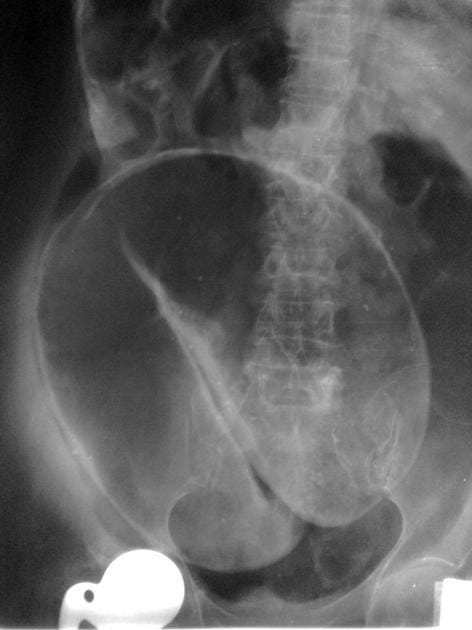Decision-Making in Urgent Sigmoidectomy: Primary Anastomosis vs. Stoma in Sigmoid Volvulus
A Comprehensive Look at Restoring Intestinal Continuity
Restoration of intestinal continuity after urgent sigmoidectomy for sigmoid volvulus (SV) presents surgeons with a critical choice: primary anastomosis or stoma creation. Each approach offers unique advantages and challenges, particularly when managing cases involving bowel gangrene, perforation, or risky bowel conditions. Recent research1 from Ataturk University Research Hospital, encompassing 1,083 cases over 58 years, sheds light on these surgical options, helping to inform evidence-based decision-making.

Understanding Sigmoid Volvulus and its Surgical Challenges
Sigmoid volvulus is a condition characterized by torsion of the sigmoid colon, often leading to bowel obstruction. While endoscopic detorsion is the first-line treatment for uncomplicated cases, surgery becomes essential in cases involving peritonitis, gangrene, or failed endoscopic management.
“In cases with viable bowel, primary anastomosis is generally performed in younger, healthier patients, while stomas are reserved for older, critically ill patients with compromised bowel integrity,” the authors note.
Research Insights: Comparing Outcomes
The study analyzed 379 cases requiring urgent sigmoidectomy, dividing patients into two groups: 173 underwent primary anastomosis, while 206 received stomas. Key findings included:
Preoperative Characteristics:
Patients in the primary anastomosis group were younger (mean age: 56.8 vs. 61.2 years) and had lower ASA scores and shock rates.
Operative and Postoperative Outcomes:
Operation Time: Longer for primary anastomosis when excluding stoma closure but shorter when including subsequent surgeries.
Mortality and Morbidity: Significantly lower mortality rates for primary anastomosis (12.7% vs. 24.3%).
Hospital Stay and Costs: Shorter hospital stays (11.8 vs. 25.2 days) and reduced costs for primary anastomosis patients.
“Primary anastomosis demonstrated significant advantages in mortality, morbidity, and healthcare costs, particularly when considering the additional burden of stoma closure surgeries,” the authors observed.
Clinical Considerations
Primary anastomosis offers distinct benefits but is best suited for patients with viable bowel and stable health status. Conversely, stoma creation remains essential for patients with gangrenous bowel or systemic instability.
“Stomas are often life-saving in cases of high surgical risk, emphasizing the importance of tailored surgical approaches,” the study concludes.
Recommendations for Practice
Surgeons should balance the patient’s general health, intraoperative findings, and resource considerations when choosing between primary anastomosis and stoma. Prospective randomized studies and matched statistical evaluations are needed to refine decision-making algorithms further.
Additional Research and Citations
Here are related studies for further insights:
Tian, B. W., et al. (2023). WSES consensus guidelines on sigmoid volvulus management. World J Emerg Surg. DOI:10.1186/s13017-023-00502-x
Yang, P., et al. (2024). Restoration of intestinal continuity after sigmoid colectomy: A matched analysis. World J Surg. DOI:10.1002/wjs.12188
Dolejs, S. C., et al. (2018). Contemporary management of sigmoid volvulus. J Gastrointest Surg. DOI:10.1007/s11605-018-3747-4
Agirman, E., Disci, E., Peksoz, R., & Atamanalp, S. S. (2024). Primary anastomosis versus stoma following urgent sigmoidectomy for sigmoid volvulus: 58-year experience in a tertiary referral center. Pakistan Journal of Medical Sciences Quarterly, 40(11), 2513–2517. https://doi.org/10.12669/pjms.40.11.10543



